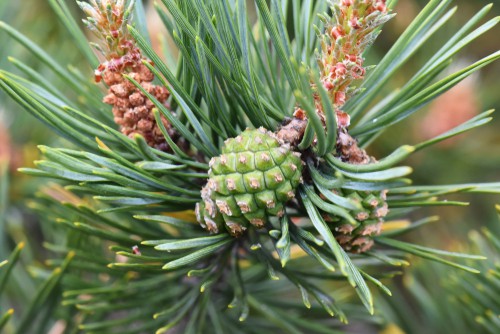Naked seeded plants, also known as gymnosperms, are a group of plants that produce seeds without an enclosing ovary. The name gymnosperm comes from the Greek words “gymnos” meaning naked and “sperma” meaning seed. This group of plants includes conifers, cycads, ginkgoes, and gnetophytes.
Gymnosperms are characterized by their unique reproductive structures, which are cones. The male cones produce pollen, which is carried by the wind to the female cones where fertilization occurs. This method of reproduction is different from flowering plants, which rely on pollinators like bees and butterflies to transfer pollen.
Gymnosperms are also unique in their vascular system, which lacks vessels and relies on tracheids for water transport.
Understanding the anatomy and structure of gymnosperms is important for understanding their role in the ecosystem and their significance in science. Gymnosperms are an ancient group of plants that have survived for millions of years. They play an important role in the carbon cycle and contribute to the biodiversity of the planet.
In this article, we will explore the different types of gymnosperms, their anatomy and structure, and their role in science and everyday life.
Key Takeaways
- Gymnosperms are a group of plants that produce seeds without an enclosing ovary.
- Gymnosperms are characterized by their unique reproductive structures, which are cones, and their lack of vessels in their vascular system.
- Gymnosperms are an ancient group of plants that play an important role in the carbon cycle and contribute to the biodiversity of the planet.
Related posts:
- What Are the Plants That Look Like Corn Dogs?
- What Are the Tiny Orange Bugs on Plants?
- What Birds Lay Eggs in Plant Pots?
Understanding Naked Seeded Plants
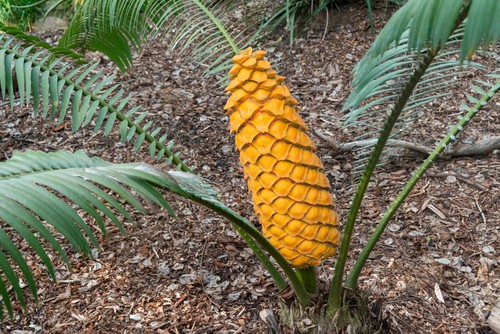
Naked seeded plants are a group of seed-producing plants that are known as gymnosperms. The term gymnosperm means “naked seed,” which is the major distinguishing factor of these plants.
Unlike angiosperms, or flowering plants, gymnosperm seeds are not enclosed by mature ovaries, or fruits. Rather, they sit exposed on the surface of leaf-like structures called bracts.
Gymnosperms are seed plants adapted to life on land and are autotrophic, photosynthetic organisms that tend to conserve water. They have a vascular system used for the transportation of water and nutrients that includes roots, xylem, and phloem. The name gymnosperm means “naked seed,” which is the major distinguishing factor.
In gymnosperms, the ovules, which contain the female gametophyte, are not enclosed by an ovary. Instead, they are exposed on the surface of the sporophyte, which is the dominant phase of the plant.
The male gametophyte, or pollen grain, is also exposed and is carried to the female gametophyte by the wind. Fertilization occurs when the sperm from the pollen grain reaches the egg in the ovule.
After fertilization, the embryo develops within the ovule, and the ovule becomes a seed. The seed coat develops from the integuments of the ovule and encloses the embryo. The seed is then dispersed, and when conditions are right, it will germinate and grow into a new sporophyte.
Gymnosperms include conifers, cycads, Ginkgo, and gnetophytes, forming the clade Gymnospermae. They are a diverse group of seed plants and are paraphyletic. Paraphyletic groups do not include descendants of a single common ancestor.
Gymnosperm characteristics include naked seeds, separate female and male gametes, pollination by wind, and tracheids, which transport water and solutes in the vascular system.
Types of Gymnosperms
Gymnosperms are a group of plants that produce seeds without fruits. They are called “naked seeded” plants because their seeds are not enclosed in an ovary.
Gymnosperms are divided into four divisions: Cycadophyta, Ginkgophyta, Gnetophyta, and Pinophyta. Each division has its unique characteristics, but all of them share the common trait of producing naked seeds.
1. Cycadophyta
Cycadophyta, commonly known as cycads, are a group of gymnosperms that have been around since the Mesozoic era. They are characterized by their large, palm-like leaves and stout trunks.
Cycads are dioecious, meaning that male and female reproductive structures are found on separate plants. They are mostly found in tropical and subtropical regions and are commonly used as ornamental plants.
2. Ginkgophyta
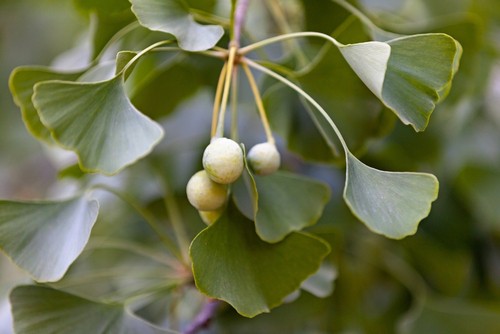
Ginkgophyta is a small division of gymnosperms that consists of only one living species, Ginkgo biloba. Ginkgo biloba is a deciduous tree that is native to China and is widely cultivated around the world.
It has unique fan-shaped leaves and is known for its medicinal properties. Ginkgo biloba is dioecious, and male and female reproductive structures are found on separate trees.
3. Gnetophyta
Gnetophyta is a diverse group of gymnosperms that includes three genera: Gnetum, Ephedra, and Welwitschia. Gnetophytes are unique among gymnosperms in that they have vessels in their xylem, which is a characteristic typically found in angiosperms.
Gnetophytes are found in a variety of habitats, from deserts to rainforests. They are dioecious, and male and female reproductive structures are found on separate plants.
4. Pinophyta
Pinophyta, also known as conifers, is the largest division of gymnosperms, with over 600 species. Conifers are characterized by their needle-like or scale-like leaves and cones. They are found in a wide range of habitats, from the Arctic tundra to tropical rainforests.
Conifers are monoecious, meaning that male and female reproductive structures are found on the same plant.
Anatomy and Structure
Naked seeded plants, also known as gymnosperms, are a group of seed-producing plants that have unique anatomical and structural features. These plants lack flowers and fruits, and their seeds are not enclosed within an ovary.
Instead, the seeds are exposed on the surface of leaf-like structures called scales, which are arranged in cones.
Gymnosperms are woody plants that possess vascular tissue, which includes xylem and phloem. Xylem is responsible for transporting water and minerals from the roots to the leaves, while phloem is responsible for transporting sugars and other organic compounds from the leaves to the rest of the plant.
The male reproductive structures of gymnosperms are called microsporangia, which produce microspores. The microspores develop into the male gametophyte, also known as the microgametophyte, which produces sperm cells.
The female reproductive structures of gymnosperms are called megasporophylls, which produce megaspores. The megaspores develop into the female gametophyte, also known as the megagametophyte, which contains the archegonium.
During fertilization, the sperm cells swim through a liquid medium to reach the egg cell within the archegonium. The fertilized egg cell develops into a diploid sporophyte, which grows into a mature plant. The zygote, which is the result of fertilization, is protected by a layer of tissue that surrounds the embryo.
Nutrient Transport
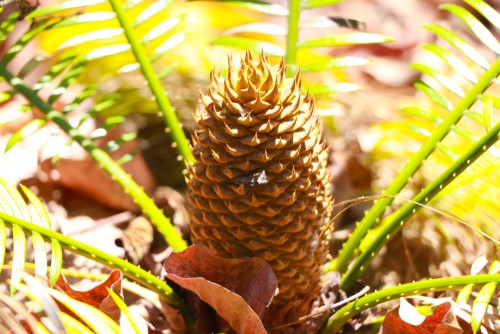
Naked seeded plants, or gymnosperms, transport nutrients through their vascular system, which consists of xylem and phloem.
Xylem is responsible for the transport of water and minerals from the roots to the rest of the plant, while phloem is responsible for the transport of sugars and other nutrients from the leaves to the rest of the plant.
Xylem is made up of specialized cells called tracheids, which are long and thin and have thick walls. These walls contain lignin, which makes them rigid and strong, allowing them to withstand the pressure of water moving through them.
Xylem cells are dead at maturity, and their walls form a network of tubes that extends from the roots to the leaves.
Phloem, on the other hand, is made up of living cells called sieve-tube elements and companion cells. Sieve-tube elements are long and thin like tracheids, but they lack a nucleus and other organelles, allowing more space for the transport of nutrients.
Companion cells are adjacent to sieve-tube elements and provide them with energy and other resources.
Nutrients are transported through the phloem in a process called translocation. This process is driven by a pressure gradient created by the movement of sugars and other nutrients from source cells (usually leaves) to sink cells (usually roots).
The pressure gradient causes water to move into the phloem, which in turn pushes nutrients through the sieve-tube elements and into the rest of the plant.
Reproduction and Life Cycle
Naked seeded plants, also known as gymnosperms, have a unique reproductive system that sets them apart from other plants. Gymnosperms reproduce through seeds that are not enclosed in a fruit, unlike angiosperms.
The life cycle of gymnosperms begins with the production of male and female cones. The male cones, also known as pollen cones, produce microspores that develop into pollen grains. The female cones, also known as seed cones, produce megaspores that develop into ovules.
Pollination occurs when pollen is transferred from the male cone to the female cone. This can happen through wind or by insects. Once the pollen reaches the female cone, it germinates and forms a tube that grows toward the ovule.
Fertilization occurs when a sperm cell from the pollen tube combines with the egg inside the ovule, forming a zygote. The zygote then develops into an embryo, which grows inside the ovule.
The embryo is protected by the diploid sporophyte tissue of the ovule, which eventually develops into a seed. The seed contains the embryo and a food reserve that will nourish the developing plant until it can photosynthesize on its own.
The male gametophyte, or pollen grain, is responsible for carrying the sperm cells to the female cone. The female gametophyte, or megagametophyte, is formed inside the ovule and contains the egg cell.
Evolution and Phylogeny
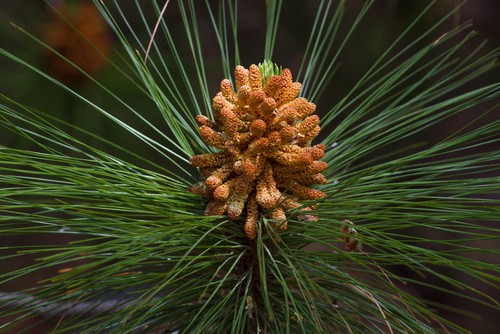
Naked seeded plants, also known as gymnosperms, are a diverse group of seed plants that have evolved over millions of years. They are characterized by their naked seeds, separate female and male gametes, pollination by wind, and tracheids, which transport water and solutes in the vascular system.
The earliest known gymnosperms date back to the late Devonian period, about 380 million years ago. These plants, known as progymnosperms, were the first naked seed plants and were followed by the appearance of true gymnosperms during the Carboniferous period, about 319 million years ago.
Gymnosperms were dominant during the Mesozoic era, which spanned from about 252 million to 66 million years ago. During this time, they played a significant role in shaping the Earth’s ecosystems and were an important food source for many herbivorous dinosaurs.
The extant gymnosperms form five divisions, the first four of which are classified as gymnosperms, plants that have unenclosed, “naked seeds”. These divisions are Cycadophyta, Ginkgophyta, Gnetophyta, and Pinophyta. Each of these divisions has unique characteristics that distinguish them from one another.
Phylogenetic studies have shown that gymnosperms are paraphyletic, meaning they do not include descendants of a single common ancestor.
Instead, they are a diverse group of plants that have evolved over time to adapt to different environmental conditions. Despite their diversity, all gymnosperms share a common ancestor with vascular plants, which include ferns, horsetails, and lycophytes.
Common Families of Gymnosperms
Gymnosperms are a diverse group of seed plants that produce seeds without fruits. They are also known as “naked seeded” plants. Some of the most common families of gymnosperms include Pinaceae, Araucariaceae, and Cupressaceae.
1. Pinaceae
Pinaceae is the largest family of conifers and includes trees such as pines, firs, spruces, and larches. These trees are found throughout the world and are known for their needle-like leaves and cones. Pinaceae trees are important for their timber and are commonly used for construction, paper production, and as Christmas trees.
2. Araucariaceae
Araucariaceae is a family of trees that are native to the Southern Hemisphere. They are commonly known as “monkey puzzle” trees and include species such as Araucaria araucana and Agathis australis.
These trees have distinctive, symmetrical branches and produce large, edible seeds. They are also used for timber and ornamental purposes.
3. Cupressaceae
Cupressaceae is a family of trees and shrubs that includes species such as cedars, junipers, and cypresses. These plants are found throughout the world and are known for their fragrant wood, evergreen foliage, and cones. Cupressaceae trees are used for timber, ornamental purposes, and as hedges and windbreaks.
Angiosperms Vs Gymnosperms
Angiosperms and gymnosperms are two major groups of seed plants. They differ in several ways, including the structure of their seeds and the way they reproduce.
Angiosperms
Angiosperms, also known as flowering plants, are the most diverse group of land plants. They are characterized by the presence of flowers, which are specialized structures that contain the reproductive organs of the plant.
The seeds of angiosperms are enclosed within an ovary, which develops into a fruit after fertilization. This fruit protects the seed and aids in seed dispersal.
Angiosperms are found in almost every habitat on Earth, from deserts to rainforests. They are important sources of food, medicine, and building materials for humans and other animals.
Gymnosperms
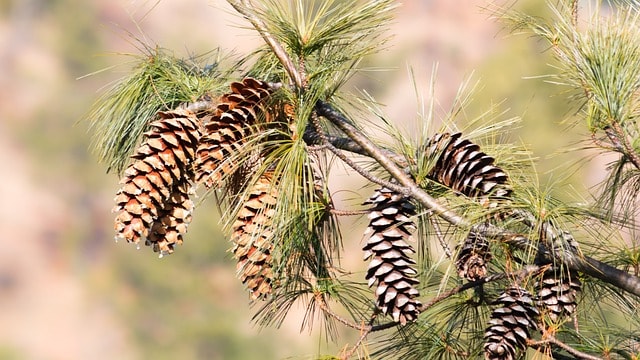
Gymnosperms are a smaller, more ancient group of seed plants. They are characterized by the absence of flowers and fruits. Instead, they produce “naked seeds” that are not protected by a fruit. These seeds are often arranged in cones, which are specialized structures that aid in seed dispersal.
There are more than 1,000 species of gymnosperms still found on Earth. They are typically found in colder climates and are often used for lumber and paper production.
Differences Between Angiosperms and Gymnosperms
The key difference between angiosperms and gymnosperms is how their seeds are developed. Angiosperms have seeds that are enclosed within an ovary, which develops into a fruit. Gymnosperms, on the other hand, have seeds that are not protected by a fruit and are often arranged in cones.
Another difference between the two groups is their reproductive structures. Angiosperms have flowers, which are specialized structures that contain the reproductive organs of the plant. Gymnosperms, on the other hand, do not have flowers and rely on wind or insects to pollinate their cones.
Significance in Science and General Knowledge
Naked seeded plants, also known as gymnosperms, are significant in both science and general knowledge. Here are some reasons why:
1. Biology
Gymnosperms are an important group of plants that have unique characteristics compared to other plants. They are seed-producing plants that produce seeds without fruits.
The seeds of gymnosperms are not enclosed in a protective ovary like angiosperms, but are instead exposed on the surface of cones or scales. This unique characteristic of gymnosperms makes them a fascinating subject of study for botanists and plant scientists.
2. Science
Gymnosperms are considered to be living fossils because they have been around for over 300 million years. They are one of the oldest groups of plants and have survived numerous mass extinctions.
Gymnosperms are also important in the evolution of plants because they are the ancestors of angiosperms, which are the most diverse group of plants on Earth.
3. General Knowledge
Knowing about gymnosperms is important for general knowledge because they are a significant group of plants that have contributed to the evolution of life on Earth.
Gymnosperms are also important for their economic value. They are used for timber, paper, and other products. Additionally, some gymnosperms are used for medicinal purposes, such as the Pacific yew (Taxus brevifolia), which is used to make the cancer drug Taxol.
Gymnosperms in Everyday Life
Gymnosperms are a group of plants that are often found in everyday life. They are known for their naked seeds, which are not enclosed in an ovary.
Some common examples of gymnosperms include pine trees, spruces, and firs. These trees are often used for lumber and paper products, making them an important part of the forestry industry.
Gymnosperms are also popular for their ornamental value. Many species of evergreen trees, such as the Norway spruce and the Colorado blue spruce, are popular choices for landscaping due to their year-round green foliage. They are also commonly used as Christmas trees during the holiday season.
In addition to their aesthetic and economic value, gymnosperms also play an important ecological role. They are often the dominant species in coniferous forests, which are home to a variety of wildlife including bears, deer, and birds. These forests also serve as important carbon sinks, helping to mitigate climate change.
Finally, some gymnosperms have medicinal value. For example, the bark of the white pine tree contains compounds that have been used to treat respiratory infections. The Ginkgo biloba tree, another gymnosperm, has been used in traditional Chinese medicine to improve cognitive function and memory.
Frequently Asked Questions

What is the term used for plants with uncovered seeds?
Plants with uncovered seeds are called gymnosperms. The term “gymnosperm” comes from the Greek words “gymnos,” meaning “naked,” and “sperma,” meaning “seed.” Gymnosperms are also known as naked-seeded plants because their seeds are not enclosed in a fruit or ovary.
What is the difference between gymnosperms and angiosperms in terms of seed production?
The main difference between gymnosperms and angiosperms is the way in which they produce seeds.
Gymnosperms produce seeds that are not enclosed in an ovary or fruit, whereas angiosperms produce seeds that are enclosed in an ovary or fruit. Gymnosperms also typically have cones as their reproductive structures, while angiosperms have flowers.
What are some examples of gymnosperm plants?
Some examples of gymnosperm plants include conifers such as pine, spruce, and fir trees, as well as cycads, ginkgo trees, and gnetophytes.
Why are gymnosperms called heterosporous?
Gymnosperms are called heterosporous because they produce two types of spores: microspores and megaspores. Microspores develop into male gametophytes, which produce sperm, while megaspores develop into female gametophytes, which produce eggs.
How do gymnosperm seeds differ from angiosperm seeds?
Gymnosperm seeds are typically smaller and simpler in structure than angiosperm seeds. They do not have an endosperm, which is a nutrient-rich tissue that surrounds the embryo in angiosperm seeds.
Gymnosperm seeds also lack a protective outer layer, called a testa, which is present in angiosperm seeds.
What is the structure of a gymnosperm seed?
A gymnosperm seed typically consists of three parts: the embryo, the seed coat, and the megagametophyte. The embryo is the young plant that will eventually grow into a mature plant.
The seed coat is a protective layer that surrounds the embryo. The megagametophyte is a tissue that provides nutrients to the developing embryo.

Hey, I’m Lisa and I’ve been an avid gardener for over 30 years. I love writing, talking and living in the garden! Feel free to connect with me on my socials below

